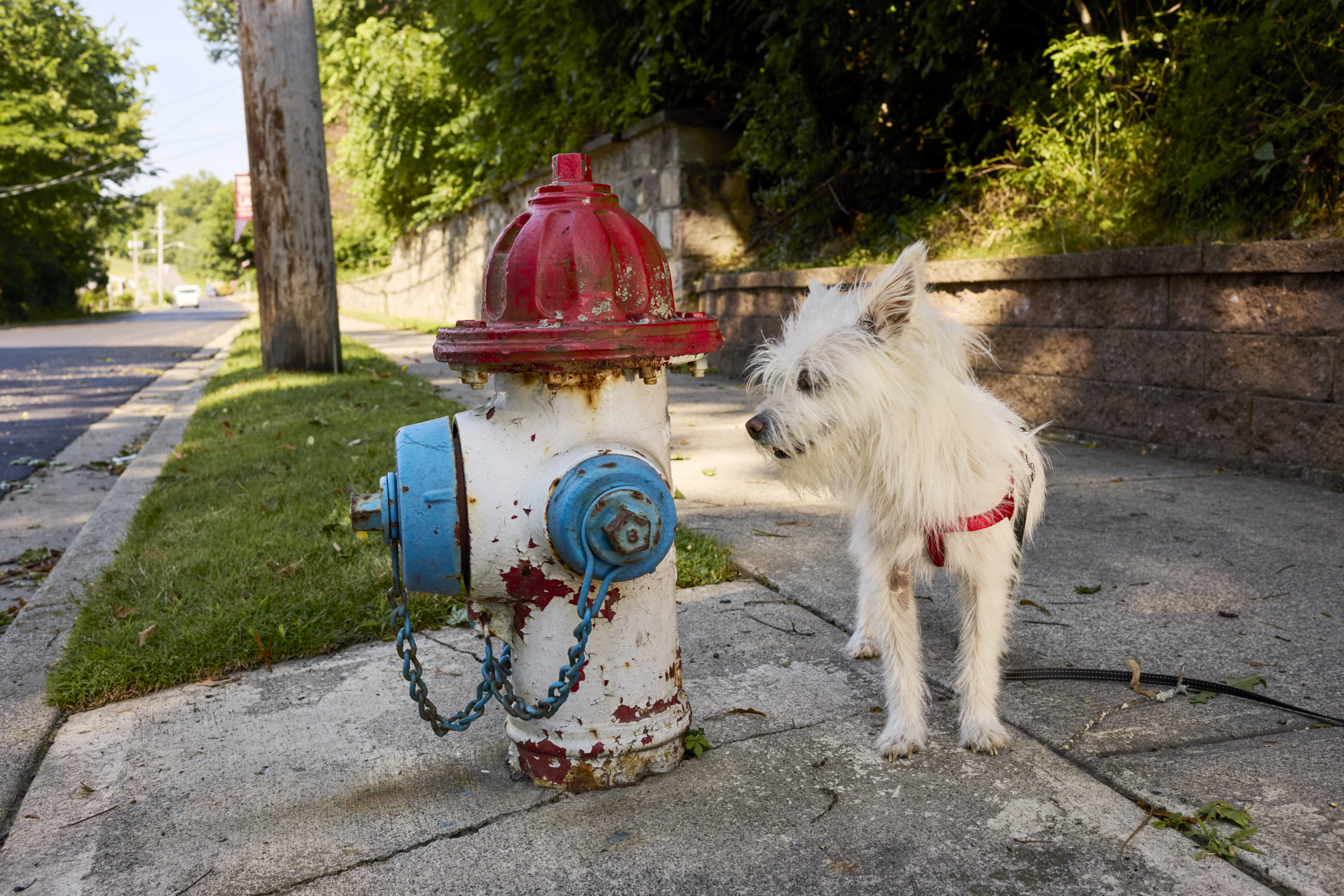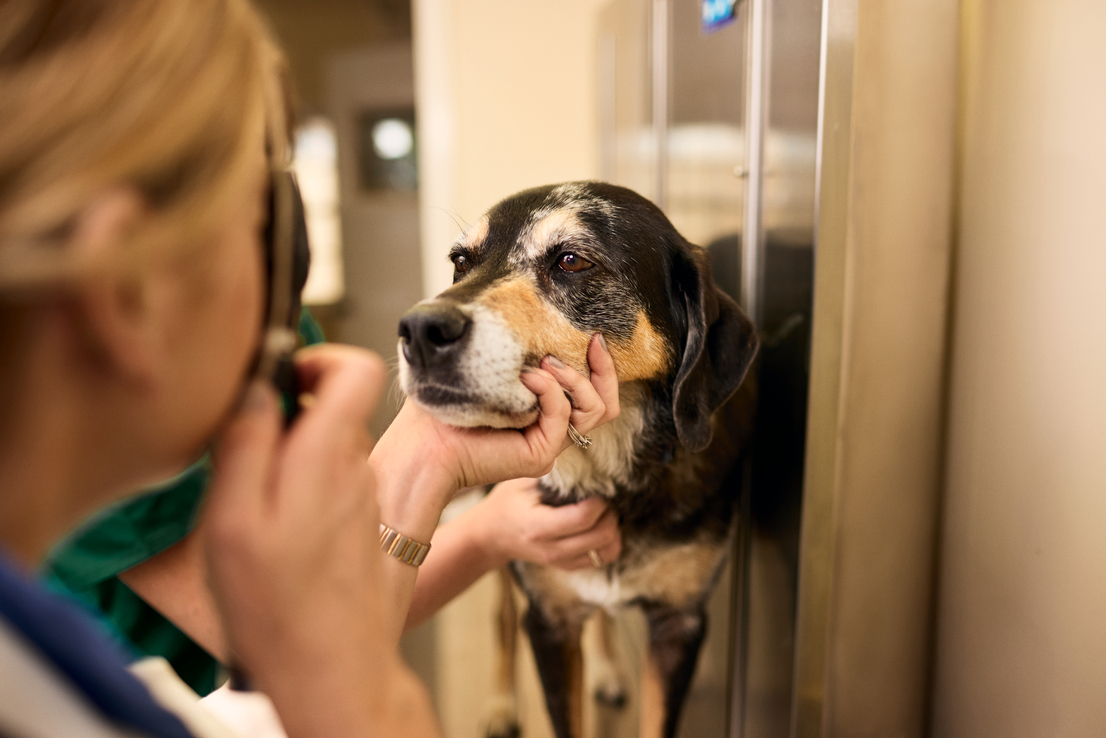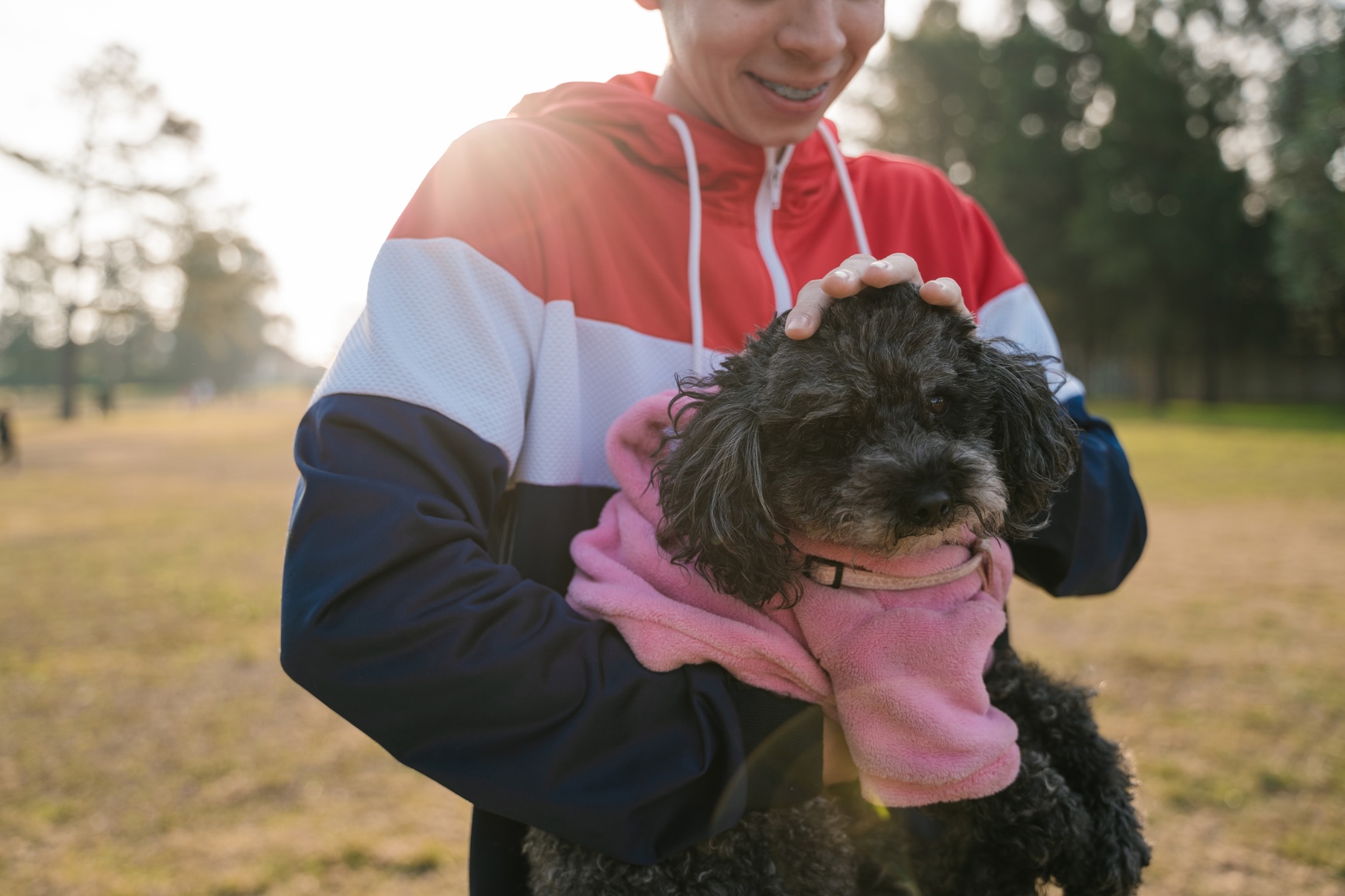
In this article:
• How do I approach a stray dog?
• How do I check a microchip?
• What’s the best place to post a found dog?
• Which shelter should I take a dog to?
• What is the difference between a rescue and a shelter?
• Where do I take a found dog in an emergency situation?
Finding a dog out on their own likely prompts a cascade of questions: How did they get here? Are they far from home? Are they healthy? And where should I take this dog?
But, as overwhelming as the situation may feel, you can help reunite the animal with its owner quickly and safely if you know the right steps. With the help of several rescue and shelter experts, we put together a guide on steps you can take if you find a stray—prioritizing the dog’s welfare and your safety while following the law.
Assess safety first
Before approaching any dog, observe its body language.
“A wagging tail doesn’t always mean a happy, approachable dog,” said Sydney Bartson Queen, Senior Manager of Shelter Behavior Sciences at the ASPCA. “If the dog is exhibiting the following warning signs,” she said, “it is best not to approach: a tall, stiff, posture with a direct stare, hackles raised, barking, high wagging tail, growling or showing teeth.”
If the dog displays these behaviors, take a photo and note their location from a safe distance instead (note any road signs or nearby businesses, or simply drop a pin on your smart phone map).
Look for a relaxed body, wide sweeping tail wag, and open mouth (here is the ASPCA guide to canine body language—with pictures). Let the dog come to you, and approach at a side angle to avoid direct eye contact. If you have treats on hand, use them. Never chase or yell at fearful animals; this will probably push them farther from home, Queen said.
If the dog appears sick, injured, or unsafe for handling, contact your local animal shelter or animal control department immediately rather than attempting to capture them yourself. Share what you know about their location.
“If the animal seems to be unsafe [either to you or to themselves], then we encourage people to contact the animal control department in the jurisdiction that they’re in,” April Pieffer, Community Engagement Coordinator at Williamson County Regional Dog Shelter in Texas, said.
Check for identification
Once you have the dog, check for a collar with an ID tag. If they have one, you’re in luck. Keep the dog in your care while you contact the owner directly.
If the dog doesn’t have that outward identification, you’ll want to scan for a microchip, according to Lauren Botticelli, executive director of the Animal Pad rescue organization. Most veterinarians’ offices will have a scanner, and if it’s after hours you can try a 24/7 animal hospital.
If you scan the chip yourself (chip scanners are available online), use the American Hospital Association’s universal microchip registry website to identify which company registered it. The microchip companies typically have 24/7 operators who can contact the owner directly.
“What they typically do for just regular people is they’ll say, ‘Okay, yep, I do have the owner’s information here. Your dog that you have in your care is Raja, and thanks for finding her. Hold on to her. I’m gonna try to call this owner,’” Botticelli said.
Many veterinary hospitals will accept dogs as Good Samaritan drop-offs and handle the reunification process themselves. “They will scan the chip. If there’s no chip, they will hold onto the dog and call the animal control that is within the jurisdiction” where the dog was found, Botticelli explained.
Note that you can’t always count on a vet hospital to handle reunification. It’s possible that they aren’t able to offer that kind of help, or are resource-strapped. If you find yourself with an unidentified dog and no chip to scan, you have a couple of next steps at your disposal.
Search social media and online databases
Before heading to a shelter, you can check local social media pages—like lost and found Facebook groups or Nextdoor—to see if anyone posted their lost pet. National online lost-pet databases, like PawBoost, also allow people to post missing and found pets by area. Boticelli told us that some such services will have info about missing pets within an hour of their disappearance.
PawBoost and similar sites are national databases. This helps to eliminate geographic barriers, which previously complicated reunifications.
Go to the shelter closest to where you found the dog
If no social network or database produces a match immediately, and you can’t keep the dog in your care for whatever reason, take him or her to the shelter—but not just any shelter. You will want to look up the shelter that is in the jurisdiction where you found the dog. In other words, don’t travel too far when taking the dog to a shelter; it makes it harder to reunite him or her with the owner.
“If you find the dog in Brooklyn, [try not to] bring the dog to a shelter in Long Island,” Botticelli explained. “If you did that, there’s a huge chance that [the owner of that dog] might not go to that shelter because it’s not the closest one to them.”
The shelter will ask for details about where you found the dog, and will hold it during a legally mandated stray period to give owners time to reclaim their pet. This is called a “stray hold.”
Consider caring for the dog while you search for their owner
Often the kindest thing to do when you find a dog is continue taking care of them yourself—that is, housing and feeding them—while you attempt to reunite them with their owner. Shelters can be stressful for dogs, since there are new noises, smells, and other animals, and they are required by law to administer vaccinations and sometimes neutering. Managing the dog yourself is one way to mitigate that stress while not putting more strain on already overburdened shelters.
If you can temporarily house the dog, keep it separate from your own pets for health and safety reasons. Continue monitoring online national databases, and your local social media. If that doesn’t immediately turn something up, consider going old-school: post flyers in the area where the dog was found, at local businesses, at veterinary offices, and throughout your neighborhood.
Some shelters offer programs that allow finders to foster pets for a period of time while still providing official intake services.
“A finder can foster that found pet through its stray hold period, but the pet is now officially a part of our shelter,” Pieffer explained. This allows the shelter to provide vaccinations, microchipping, and spay/neuter services while the pet remains in a home environment. “The finder isn’t necessarily taking on this animal forever. We are their safety net.”
You can also put a finder’s hold on the animal. If you’re interested in adopting the dog, once the stray hold period is over and no one has reclaimed the animal, the shelter will ask you if you’d like to adopt it.
A quick note on rescues versus shelters
Shelters—which can be nonprofits, but are often government-funded—take in strays and surrendered animals, and work on reunification as well as adoption. Rescue organizations cannot legally accept stray animals directly, but focus on finding fosters or forever homes for high-risk animals. As Botticelli put it, “We cannot say, ‘Cool, we accept you into the rescue and we’re gonna put you up for adoption,’ because that is potentially someone’s animal.”
Emergency situations
During disasters like fires or floods, normal jurisdiction rules may be suspended. Botticelli recalled the wildfires in Los Angles earlier this year: “[Shelters] weren’t even going by jurisdiction at all; they were accepting all animals, because the animals were running.”
Emergency drop-off sites may be established at community centers to aid the influx of animal intakes. Injured animals should go directly to 24-hour veterinary hospitals rather than shelters.
Pet owners in disaster-prone areas (and in general) should create emergency plans for their pets, ensure pets wear updated ID tags and microchips, and consider GPS tracking collars. Never leave your animal behind during evacuations, and bring them inside at the first sign of disaster. Stress can cause a dog to bolt, so you’ll want to ensure that they’re secure while you evaluate the situation. The ASPCA provides disaster preparedness resources.
Many dogs that enter shelters are simply pets that got out. They have owners actively searching for them. Taking these preliminary steps can save resources and reduce stress on both the dog and shelters. By using online databases and checking microchips first, finders can often facilitate quicker reunions, which means everyone can get to the good part faster: big tail wags and happy tears from the dogs and their humans, respecitvely.




